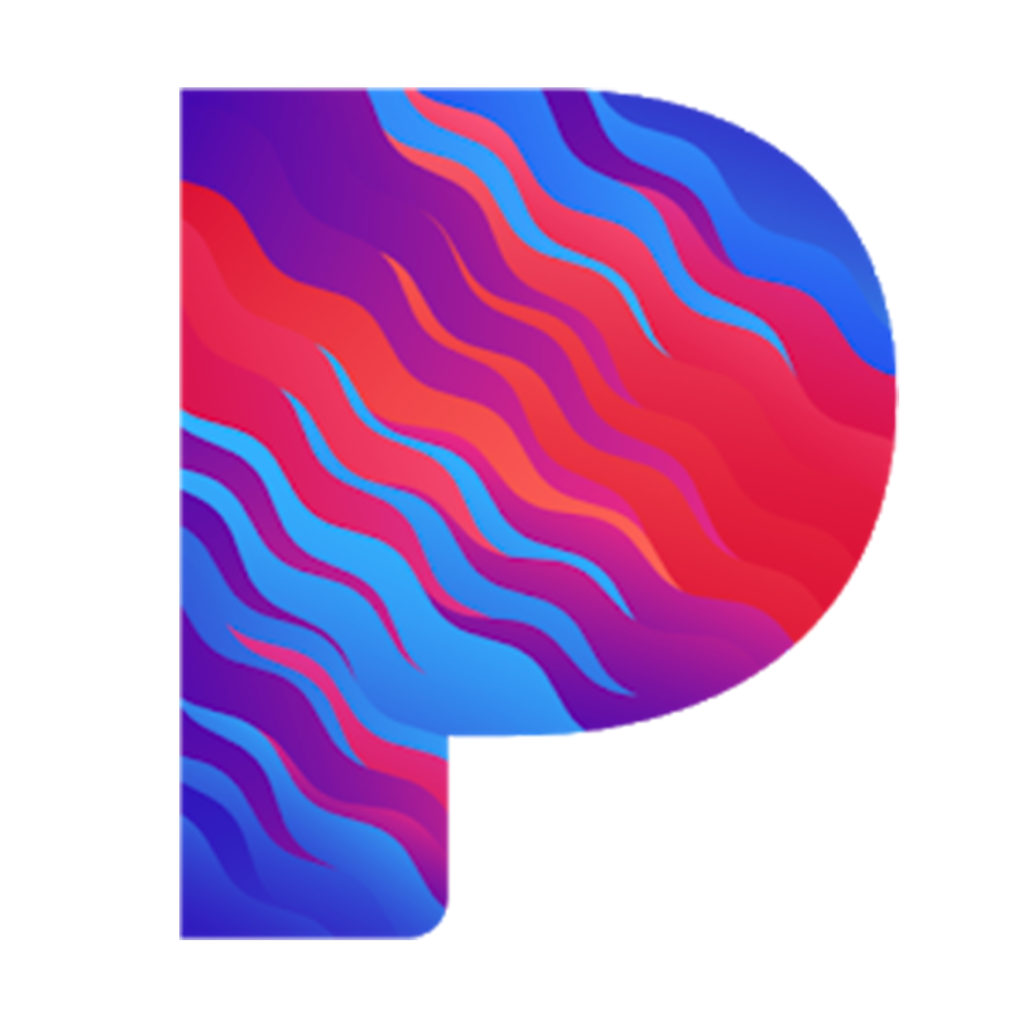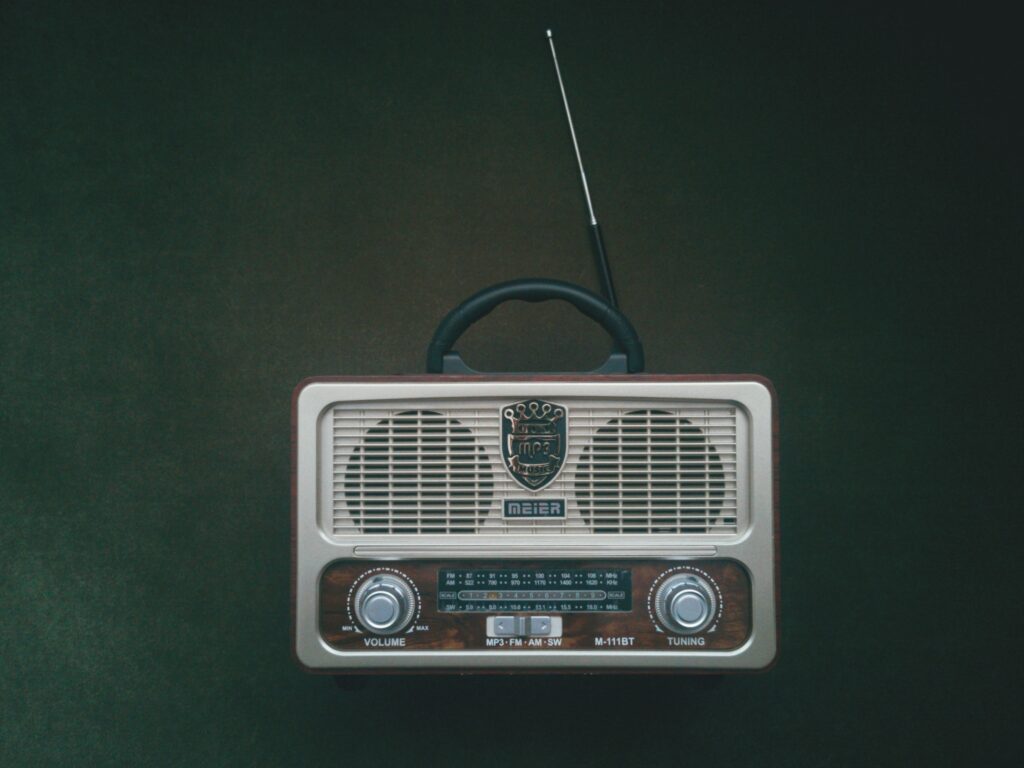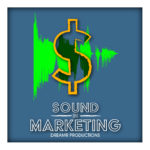Pandora

Pandora has been stepping up with embracing sound marketing in a way I wasn’t expecting from them. Not only do they have a podcast which I find highly interesting and enjoyable to listen to but they are also launching, or rather have launched their Pandora For Brands department. This is where they actually are working with brands to develop ads to target your exactly specific audience.
I say exactly specific because we’re not just talking about grabbing music and slapping it on an ad. They actually would encourage you not to do that. Pandora will develop an ad with you that will speak to your correct audience and ideally increase your click rate by using their 10 years of data and analytics on their consumers to your advantage.
1 in 3 Americans are listening to Pandora. Their data allows you to be able to target your audience based on who they are, what they listen to, where and when they listen, what they are doing when they listen, and even how they are listening. Pandora even has 10+ third party data providers that can hone in even further with data like shopping behaviors, media consumption, purchase habits, what media they go crazy for, etc.
I’m not sure what the cost is for Pandora. They don’t list it as far as I can tell. They want you to reach out specifically which I could see as good. They do acknowledge the small business in their information so it could be a situation where they calculate based on marketing budget or annual revenue or something like that. Or I could be entirely wrong and you have to sacrifice your first born. Who can say for sure.
Spotify

With Spotify I actually found a little bit less information which I found a bit surprising. Not saying they’d be less effective but it looks like they are taking a little bit more of a hands off approach. They have an Ad Studio where it looks very similar to creating a FaceBook or a LinkedIn ad.
You target your audience, write your script, choose your background song, and send it over to them to record V/O and begin the campaign. They have their own V/O team which I could see as a good thing (30 seconds goes by fast…sometimes faster than an average person naturally talks). Studies have shown that 61% of audience responds better to an announcer read ad as opposed to a host read ad. So it makes sense to keep this outsourced.
Their minimum ad spend is $250 and you don’t get charged over your campaign budget spend. I say this because I’ve experimented with Linkedin Ads and if people are clicking they WILL keep running it. This causes unforeseen spends so that little nugget of information is very reassuring to me. However, I’m not sure if there would be foreign fees or not because I believe Spotify is a Swedish company.
The main objective I believe for both parties is that they don’t want to kill the listening vibe. They want to create relevant ad experiences. And they now have the data and know-how on how to do that.
Branded Sound In Advertising
I remember not so long ago listening to my kid’s Winnie the Pooh Pandora station in the middle of the day and an ad for Match.com came up …actually this happened multiple times. Seeing as it was a kid’s channel and it was the middle of the day with mom not working I would think that Match was NOT reaching their target demographic. I take that as a “par for the course” situation because since then, my ad experiences have become more and more relevant to me and my lifestyle.
And here’s where a sound logo comes in handy. Pretty much all of us have turned on a music streaming service at one point or another. When you do that, chances are you are not looking at your phone, or iPad, or whatever device is streaming. So when those all important ads of yours pop up, how do you let the listener (because they are not necessarily a “viewer”) know that it is you? Sound. Ads can be 30,15, or even as short as 10 seconds long. And if Match had had a sonic logo play before their ad I would have known right up front “ok, I can tune this one out.”
With a tiny amount of attention real estate, you’ve got to draw your listener in and fast. They may not even have time to look at the device by the time your ad is over.
I even think sometimes when the script is so clever or so funny, we stop on that and remember the commercial but not necessarily the brand. But, I’m not an advertising manager so we’ll just side step that thought for now.
Spotify Playlists
Something that I’ve been honestly just ignoring and putting aside for a long time is understanding fully Spotify and its playlists. I know that if I put more time and energy into even being on the platform, I could find a better use for the notoriety of my music albums. I’ve been doing the Sound In Marketing Podcast for only a few months now and already it’s gotten more streams on Spotify than my albums that have been living in the streaming and CDBaby world for years. I’ve barely marketed them as albums. A lot of that has to do with the fact that album selling isn’t really where things are any more but…I’m sure with more thought I could come up with something clever.
So what do I need to do?
Well it looks like I was right. In order to figure out how to get on these highly competitive and sometimes impossible to get on playlists, I have to be on the platform more.
I need to understand the platform like a pro, in order to show up on it.
The other thing I need to do is develop my brand better. I need to have a cohesive plan for my music rather than just my podcast, or just my services, etc. It’s kind of crazy but true. My music, to me, seems really disjointed. It’s just a collection of things I like to listen to and styles I like to write in. However, I’m extremely eclectic so branding becomes more difficult.
I feel it’s a bit like marketing The Princess Bride. If you haven’t read As You Wish by Cary Elwes go get it now. It’s amazing. Anyways, Cary talks about how much trouble they had marketing the movie. It was a box office flop. In fact, it wasn’t until VHS showed up and home movie watching exploded did the movie get the recognition that it so rightly deserved.
For those not familiar, the movie was kind of all over the place. Sword fighting, pirates, giants, true love, ROUS’s, and then there was this sweet grandson/grandfather element. The whole thing tied up with how much the grandfather loved his grandson. It baffled the marketing department and so it of course baffled the potential viewers.
The way that that problem was solved was through a brand new medium; VHS. Personally, I discovered it at a sleep over where my friend just happened to have a VHS player (which I did not) and had happened to have rented it. My world would never be the same again.
So what medium would work best for me? And to bring it back to you guys, what medium would work best for you?
Sound In Advertising
I found a company called AdSonica. AdSonica creates static ads with sound that you can attach to your marketing arsenal. They combine both the audio and the image into one jpeg file so that the two can stay cohesive as well as keep the quality of both functions clear without deterioration. You’re also able to include things like coupons and multiple soundtracks within the whole thing. Pretty handy.

“There are limitations however.” William stated, “The maximum length of the audio is fixed by the ad companies – which limit the total ad size to 150K – so when you combine an image with sound you have about 12 seconds of audio and the picture.”
Yet another reason why a sonic logo comes in handy. With limited time comes limitations. Create a recognizable sound and you can cut right to your point that much more effectively.
By adding sound, people more fully engage in the advertising and often click 2-3x as often.
William Agush
I also asked William about preparing for “voice click” optimization but they are not there yet. I don’t blame them, that stuff is crazy new and in my head impossible. Currently, they are working on how to best implement with smart speakers.
They’re cost is a small percentage of your ad spend. That’s it. For more information on AdSonica and to see if it’s right for you, I’ve included a link in the show notes. Just tell them Jeanna Isham says hi.
Functional Sound
The importance of functional sound is becoming more and more clear. So what is functional sound?
Functional sound is a short mnemonic phrase (musical or not) like a ringtone, or a tone of some sort associated with an alarm or the turning on of a device. It could be the sounds when you punch in your zip code at the gas station or a pin at the ATM. Most notably (at least to me) is the sound you hear from the chip reader when you remove your credit card at a store. These are sounds in your day to day that, without you realizing it, are ingrained in your subconscious.

Veritonic is an unbiased 3rd party company that gathers data from all sorts of companies to see how their sounds and sound marketing fairs with the global consumer market. They just released a new case study on the effectiveness of Earcons, another word for Functional Sound, in the market today.
Premium vs. generic earcons is basically what the case study was about so they started it off with the premise that functional sound IS effective regardless. There were a whole bunch of numbers that I won’t get into but to sum it up 60% of listeners preferred a premium sound to a generic sound. The study also found that, “Premium sounds that are designed as part of a unified experience are more effective than sounds designed in isolation.”
60% of listeners preferred a premium sound to a generic sound.
What all of this means, is that premium sounds (sounds customized to a specific brand), and unified experience sounds (such as keeping on/off or connected/disconnected sounds reciprocal) have the highest recall rates.


